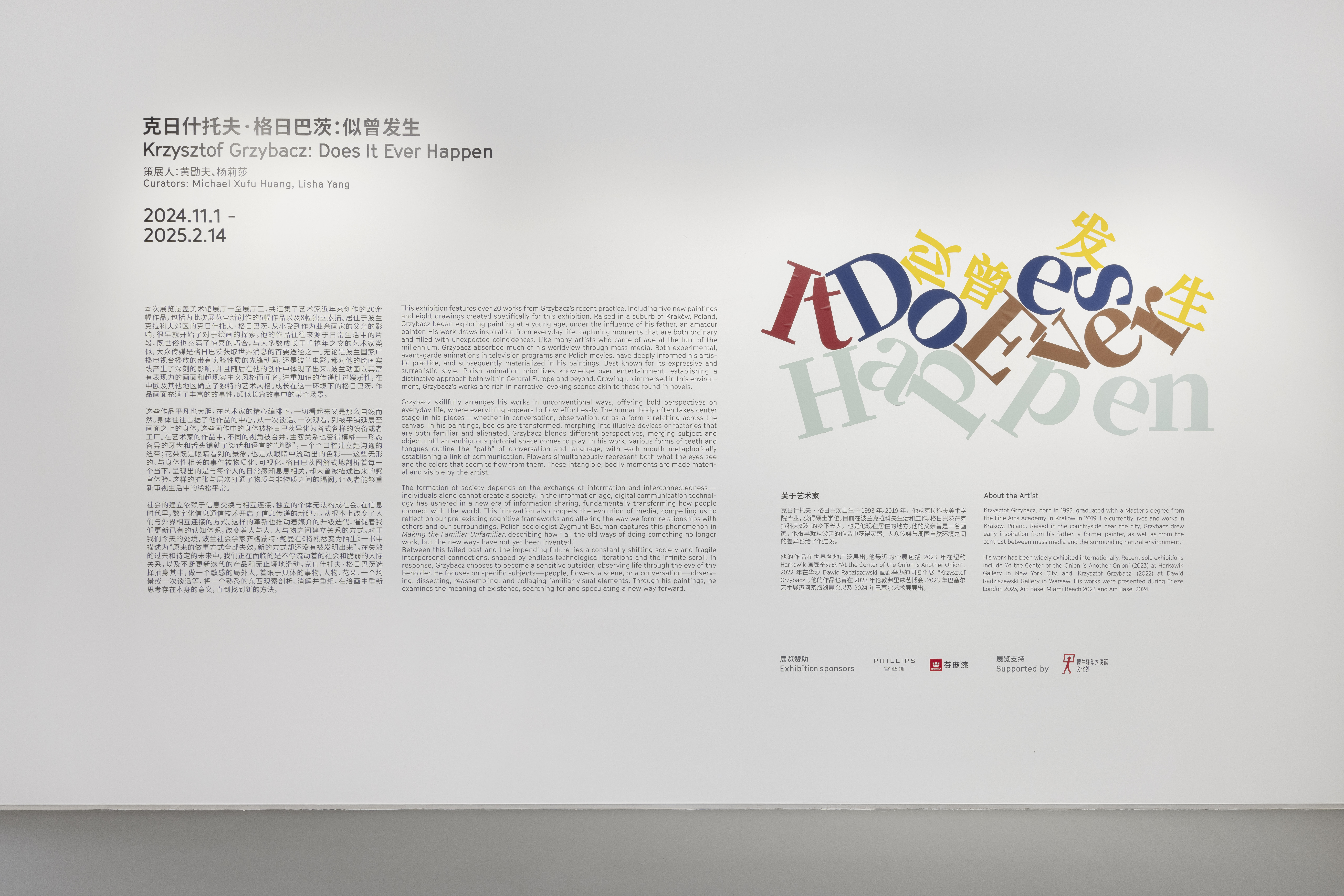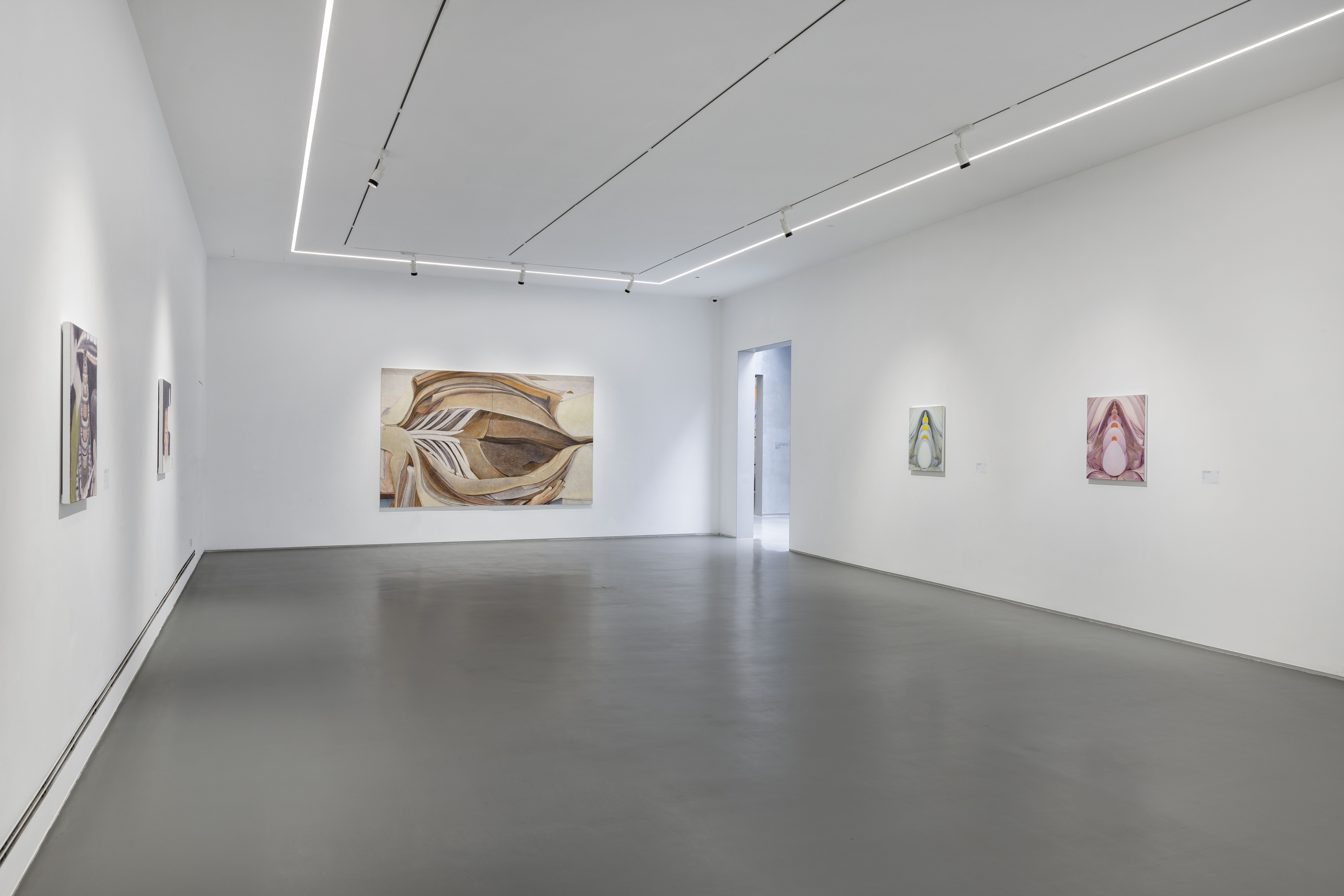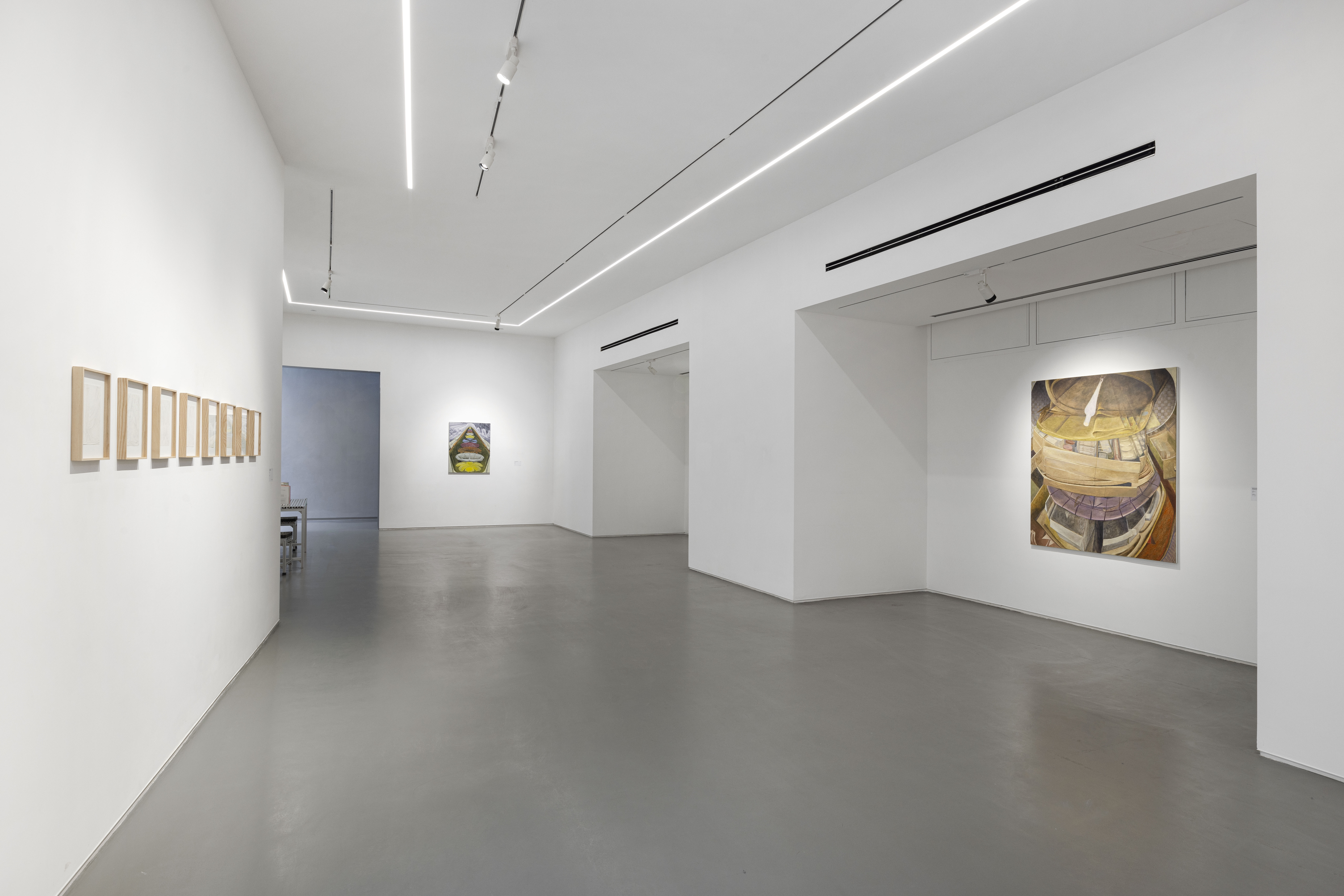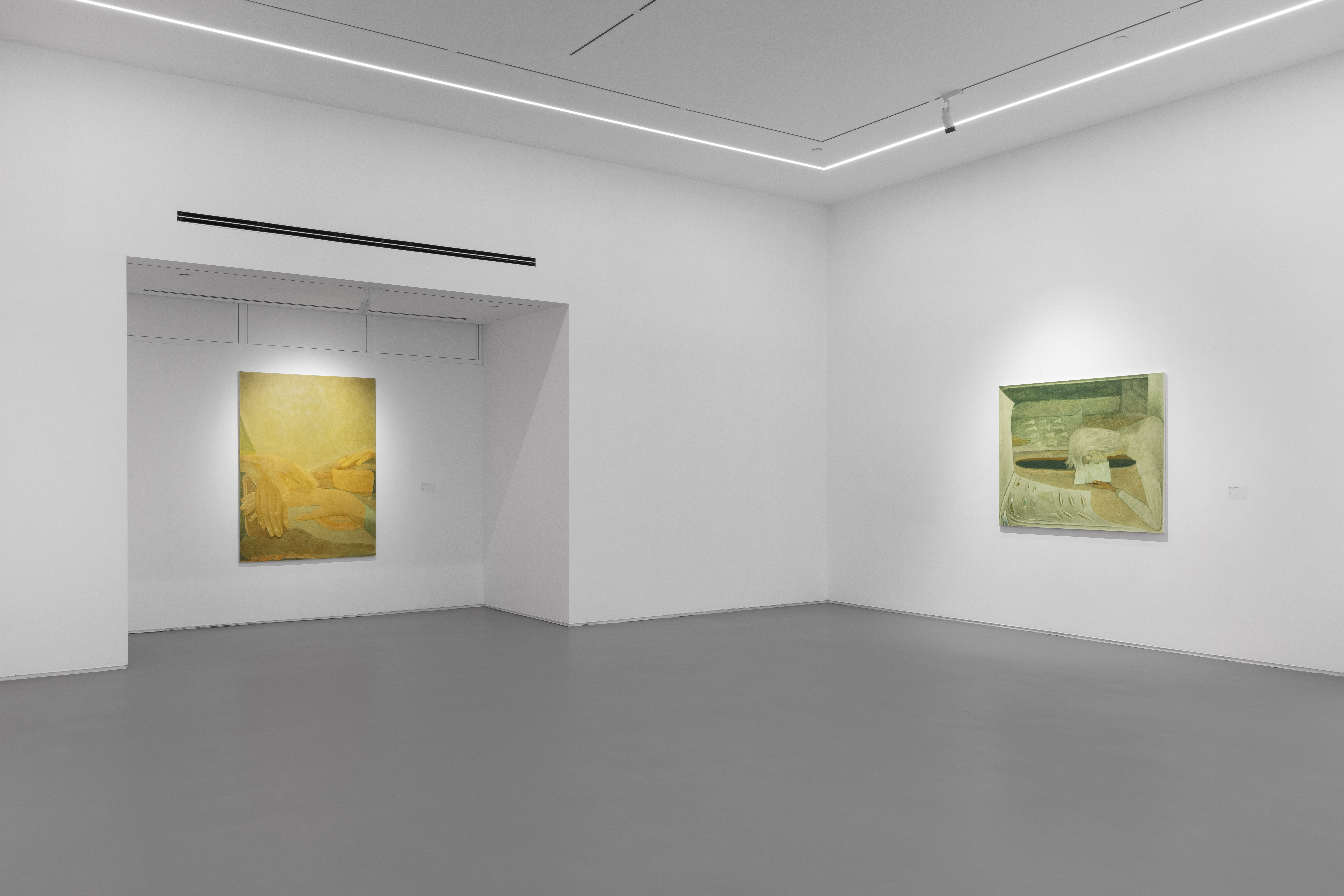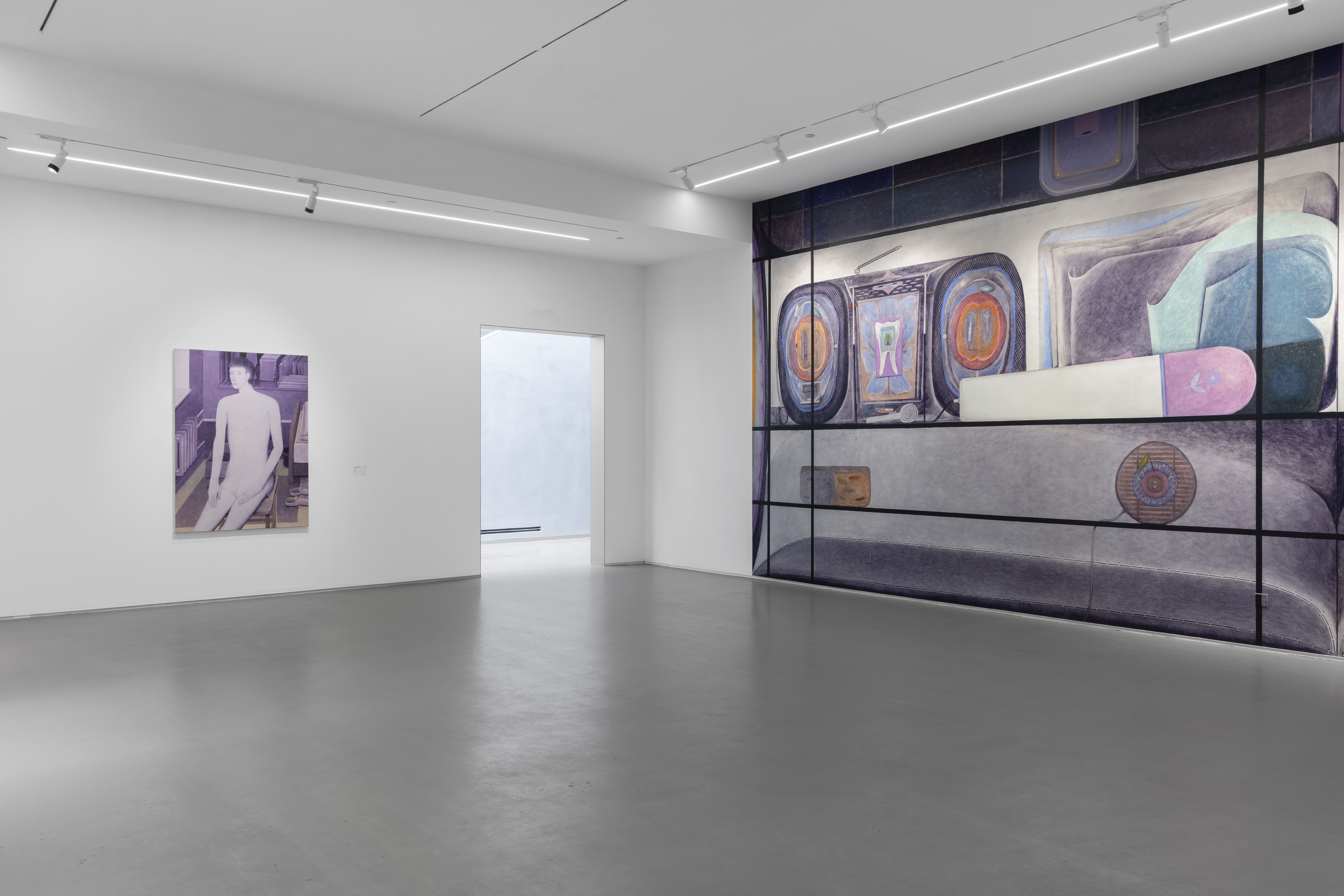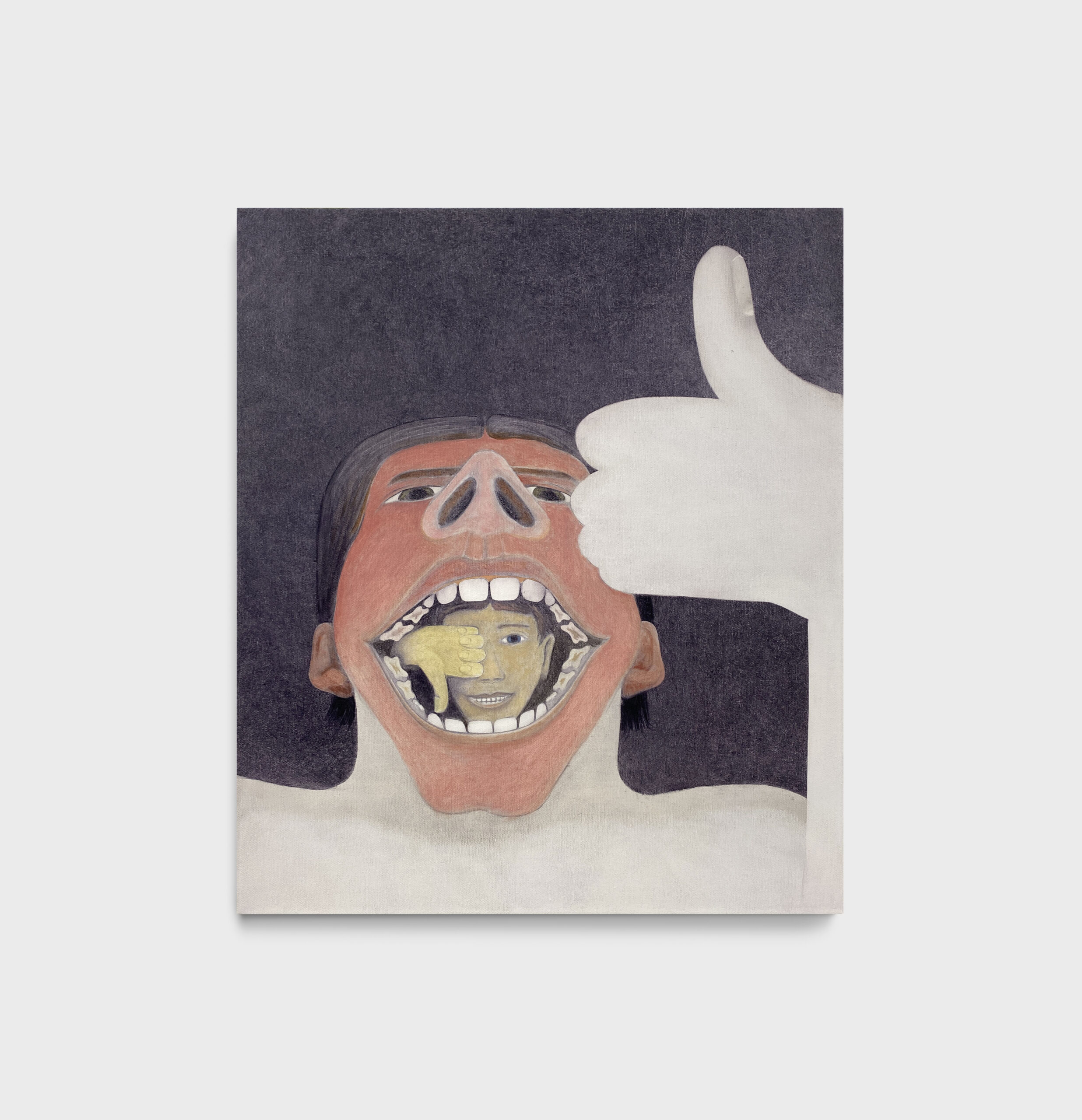
Grzybacz skillfully arranges his works in unconventional ways, offering bold perspectives on everyday life, where everything appears to flow effortlessly. The human body often takes center stage in his pieces—whether in conversation, observation, or as a form stretching across the canvas. In his paintings, bodies are transformed, morphing into illusive devices or factories that are both familiar and alienated. Grzybacz blends different perspectives, merging subject and object until an ambiguous pictorial space comes to play. In his work, various forms of teeth and tongues outline the “path” of conversation and language, with each mouth metaphorically establishing a link of communication. Flowers simultaneously represent both what the eyes see and the colors that seem to flow from them. These intangible, bodily moments are made material and visible by the artist.
The formation of society depends on the exchange of information and interconnectedness—individuals alone cannot create a society. In the information age, digital communication technology has ushered in a new era of information sharing, fundamentally transforming how people connect with the world. This innovation also propels the evolution of media, compelling us to reflect on our pre-existing cognitive frameworks and altering the way we form relationships with others and our surroundings. Polish sociologist Zygmunt Bauman captures this phenomenon in Making the Familiar Unfamiliar, describing how ‘ all the old ways of doing something no longer work, but the new ways have not yet been invented.’
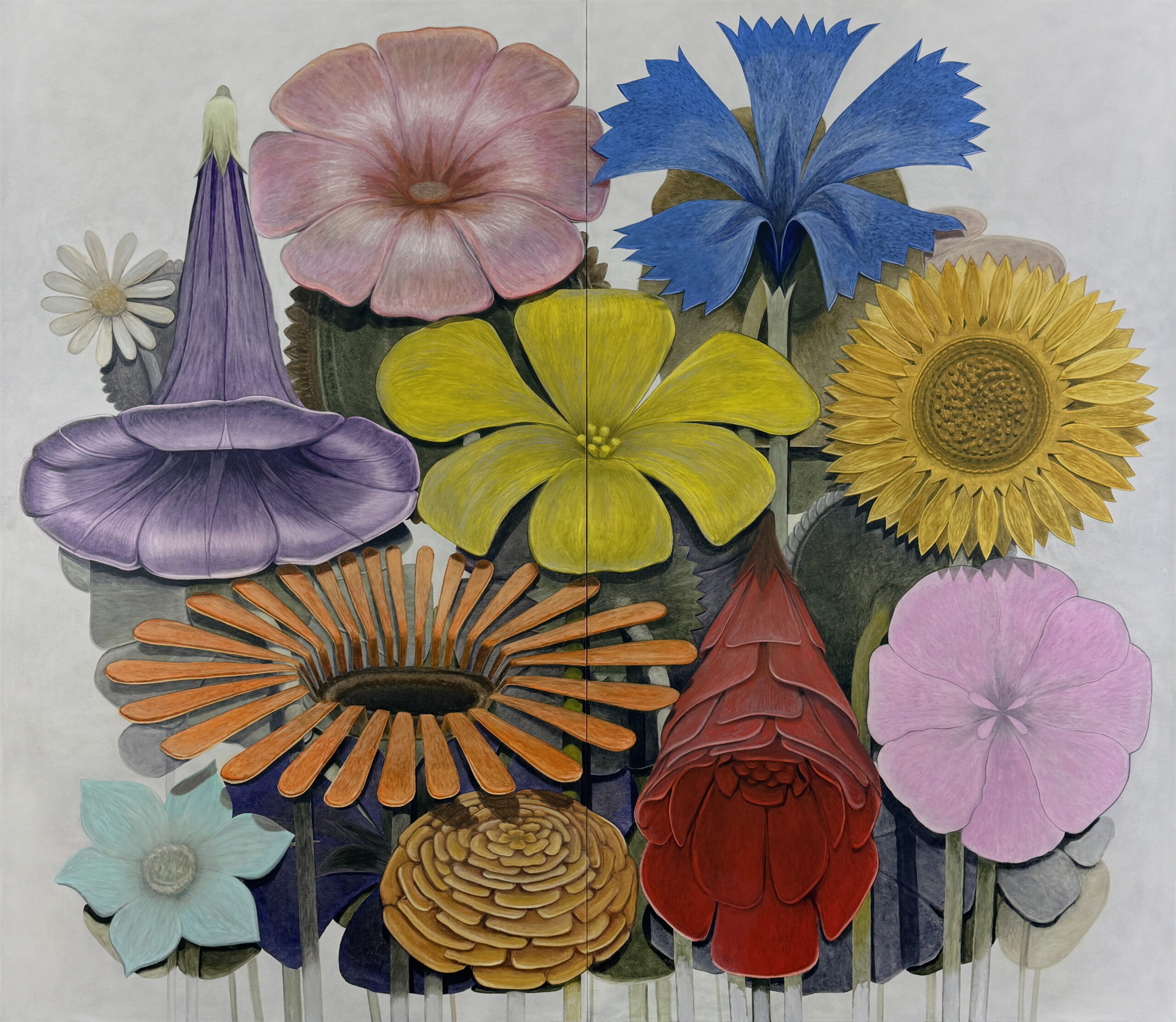
Between this failed past and the impending future lies a constantly shifting society and fragile interpersonal connections, shaped by endless technological iterations and the infinite scroll. In response, Grzybacz chooses to become a sensitive outsider, observing life through the eye of the beholder. He focuses on specific subjects—people, flowers, a scene, or a conversation—observing, dissecting, reassembling, and collaging familiar visual elements. Through his paintings, he examines the meaning of existence, searching for and speculating a new way forward.
About The Artist
About The Artists
About The Curators
